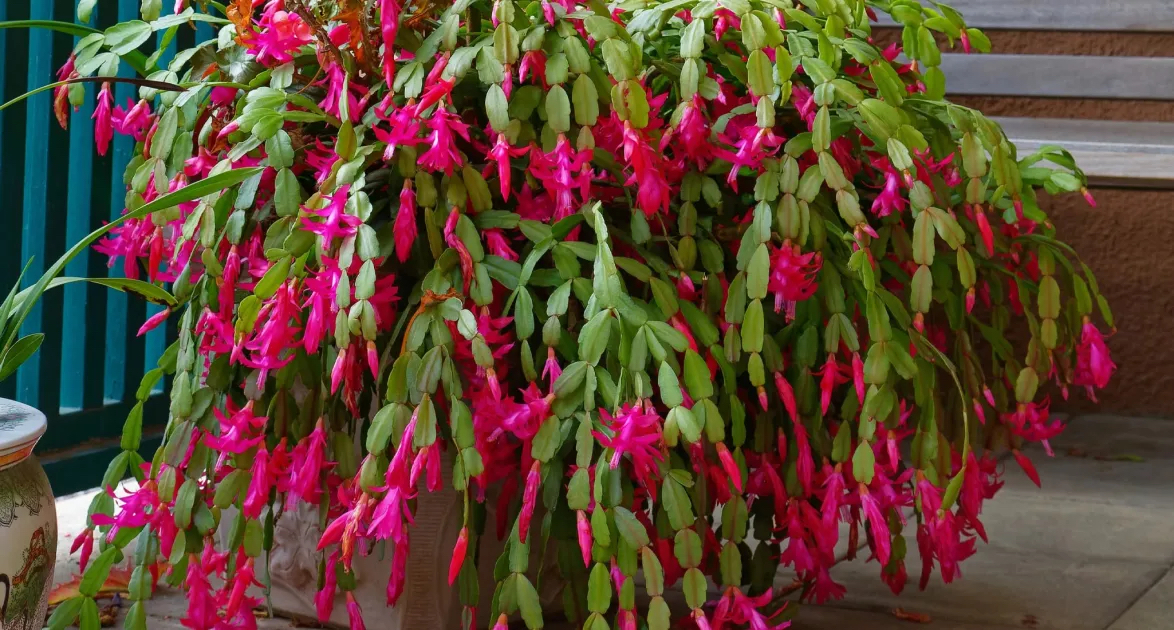The Hort Report: Cleaning up your garden, caring for a holiday cactus and planting fall bulbs

In the past few days, we saw the first killing freeze of the year. Many of you have picked your last tomato and other vegetables this past weekend. The flowers will quit blooming too.
However, many days of decent weather are ahead for you to be doing many projects outside.
You can start thinking about cleaning up your garden and flowerbeds. Did you have any problems with insects or disease with any of the vegetables in your garden? If you did, make sure you get them all pulled up and destroy them.
I like to pull them up, exposing the roots. This will help break up the soil that the vegetable plant was in. An example would be the squash bugs that destroyed my pumpkins, squash and gourd plants.
Gather all the plants damaged and dead from the squash bugs, put them into a pile and burn them. Also I raked up all the mulch and other plant material around the plant and burned it. This helps kill all squash bugs living among the plants and plant material, along with the eggs the squash bugs have laid.
Next I will gather up all the diseased vegetable plants. We don’t have any most years, but if you do, burn them too. I will then rake up any mulch and other plant material, burning it too.
Depending on how the rest of the vegetable plants look like, pull up the plants or cut them off at the top of the soil, leaving the roots. If you leave the roots in the soil, they will help break up subsoil that the new plant roots will grow into. The roots also will help add much needed organic matter into the subsoil.
Once I get all the tops or the whole vegetable plants removed from on top of the garden soil. I will use them in a compost pile if they are insect and disease free. If not, burn them. You don’t want this to be part of any compost pile. Putting diseased or insect infested plants and plant parts will only help spread the insects or the diseases in the plant parts.
Once all the vegetable plants that have died off are removed, apply some mulch made up of composted organic matter, then till it into the garden before the first hard freeze of the garden soil. This will help build up the organic matter in the soil.
I like to do this in the fall and winter when the weather will help break down the organic matter into the garden top and subsoil before next year’s growing season.
Tilling the garden in the fall exposes the adult insects and the eggs that they may have laid in the soil that haven’t hatched yet. This helps break the life cycle of the insects.
After tilling the garden and allowing the weather to work the compost mulch into the garden soil. I will add more organic matter to the garden soil. Sometimes you can add soil amendments like sand, lime and peat moss if you think the garden needs it. Then the winter weather will help break down anything you add to the garden before next spring.
With the flowerbeds, you will have several more days to get them ready for winter. I will talk more about this in a future The Hort Report.
Once the time change happens, there won’t be much daylight after 5 p.m. I like this time of year with the changing weather. I just don’t like that it gets dark so soon.
Many of you may have a holiday cactus you hope will be producing flowers in a few weeks. How can you get yours to bloom starting before Christmas?
There are three different types of holiday cacti, all triggered by the longer nights and cooler days. Thanksgiving cacti are the ones that bloom first and their blooms will last the longest. They bloom from late fall through mid-winter.
The Christmas cacti is the one most people have. They tend to bloom from early to mid-winter. An Easter cacti blooms late winter to mid-spring.
Too much light or a high temperature is the main reasons your holiday cacti won’t be blooming when it should. To help get your holiday cacti to start to bloom, do this first. Your plant needs to have at least 8 to 10 hours of daylight and 14 or more hours of darkness for at least 6 weeks. If plants are in rooms which have lights on for several hours at night, move your plant to another room or you can cover your plant with something, uncovering it in the morning.
Learn the room temperature is that your holiday cacti is kept in. The best temperature to have in the room is between 50 and 60 degrees. Help the plant start to bloom by putting it in a place where the temperature is around 45 degrees for several nights in a row.
Keep the plant watered while it is blooming. Don’t over water it. Don’t let the plant dry out, as it will start to drop its blooms early.
Now I want to talk about planting fall bulbs. You need to be planting them now so they will be flowering in the coming spring.
Plant spring flowers in the fall. They are dormant perennials. They need the wet soil and cool weather that we have in the fall to help them awake from their dormant stage. This allows them to start to grow roots once the spring weather warms up the soil that they are planted in.
All fall bulbs are not true bulbs. Irises are a rhizome, and crocuses come from corms. True bulbs are tulips and daffodils, and flowering bulbs need to be planted in the fall.
Planting your bulbs when the soil temperature is below 60 degrees. This usually is 6 weeks before a hard freeze. Many of you have had a slight frost but not a hard ground freeze. This is still several weeks away.
When selecting fall bulbs, get ones that are fresh and firm, not moldy or rotted. Make sure the husks are intact. This makes sure they can fight off disease better. Make sure to plant the bulbs soon after buying them. If not, store them in a cool dark dry place at a temperature between 60-65 degrees.
Be sure to plant bulbs where they get partial sun in the spring of the year, allowing the soil around the bulbs to get warmer sooner.
Plant bulbs in well-drained soil so they won’t rot during the winter months before they bloom in the spring of the year. Put organic matter or compost in the hole you have dug to put your bulb into, giving it the nutrients it will need to grow.
Plant your bulbs a little deeper than normal if you are planting in a sandy-loam soil. Bulbs planted in clay type soils need to be planted shallower.
Plant bulbs that will grow taller need to be planted behind shorter flowering bulbs in your flowerbeds. Mix bulbs that flower at different times in the same flowerbed.
Once you get the bulbs planted, water them deeply. The bulb will settle into the hole better and provide needed moisture to allow the bulb to start to grow roots. Before a hard freeze freezes the soil hard, water the soil again. This is when your newly planted bulbs will start to grow roots for the new spring growing season.
I have received several questions about various problems that some people had this past growing season. In the coming weeks, I will try to answer them. This time of year is when I like to get questions about problems you had.
I really appreciate all your questions in the past and look forward to them in the future. So thanks and please keep them coming. Call me at 573-588-2040 Shelby County Implement in Shelbina, or better yet, just come out and see me. I really enjoy having people just stop me when they see me and ask a question.
Hope you and your family enjoyed Halloween this year.
Miss Clipping Out Stories to Save for Later?
Click the Purchase Story button below to order a print of this story. We will print it for you on matte photo paper to keep forever.

